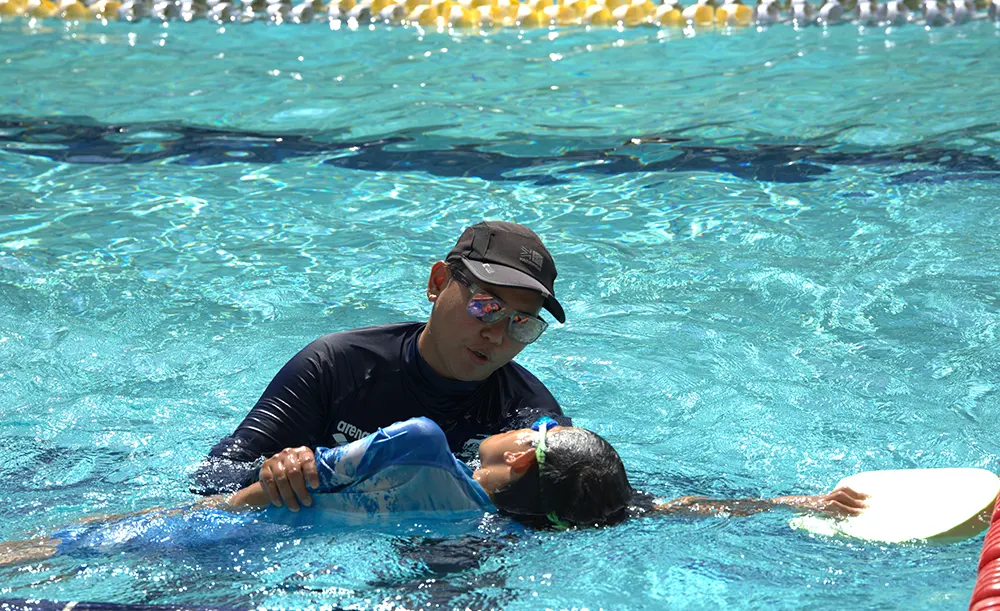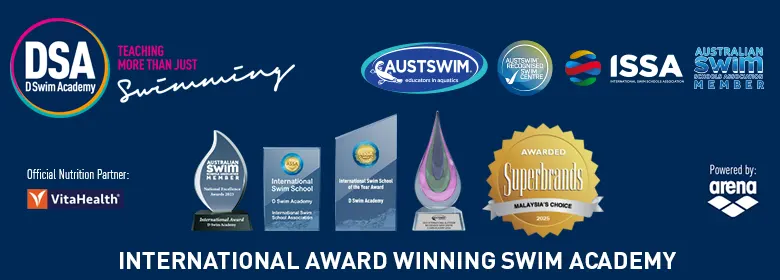
Ensuring that children learn correct form and practice consistently prevents bad habits from forming, allowing children to develop into strong, skilled swimmers.
Why learning to swim the right way the first time is crucial for children
When it comes to teaching young children life skills, learning to swim stands out as one of the most essential. However, like all foundational skills, it’s crucial that children learn the right techniques from the beginning. Here’s why starting with proper swim instruction makes all the difference in safety, confidence, and long-term success in the water.
1. Safety Comes First
The primary reason for children to learn to swim correctly from the outset is safety. Drowning remains a leading cause of accidental death worldwide, especially among young children. Malaysia’s warm climate and plentiful water destinations mean that swimming and water-related activities are common. However, without the right instruction, children may lack the ability to stay calm and react effectively in water. Proper foundation teaches crucial water safety techniques such as floating, controlled breathing, and basic survival skills, which can make a life-saving difference in emergency situations.
Structured swim programs emphasize water safety as an integral part of learning to swim. These programs teach skills in a step-by-step manner, allowing children to develop gradually while understanding safe behaviors around water. This foundation of safety not only protects children but also gives parents peace of mind knowing their child is prepared.
2. Building Confidence in the Water
Starting with the right techniques helps children build confidence as they gradually progress through each swimming skill. When children are properly guided by trained instructors, they feel supported, which encourages them to trust their own abilities. This gradual build-up is particularly important for children who may have an initial fear of water or a hesitation around deep pools.
Proper swim instruction often includes exercises that build comfort in the water, such as blowing bubbles, floating, and kicking in shallow water. These early successes make a child feel accomplished and motivated, encouraging a positive relationship with water from a young age. Without this foundation, children may feel frustrated or fearful, which can lead to long-term anxiety about swimming.
3. Avoiding Bad Habits
Learning incorrect swimming techniques can be challenging to correct later on, as unlearning habits is often more difficult than learning them correctly in the first place. For example, a child who learns to swim with improper breathing techniques may struggle to build endurance and efficiency, which can affect their progress as they advance to more complex strokes.
Many certified instructors in Malaysia are trained to recognize and correct improper techniques early on. By ensuring that children learn correct form and practice consistently, these programs prevent bad habits from forming, allowing children to develop into strong, skilled swimmers as they grow.
4. Laying a Strong Foundation for Competitive Swimming
For children who may wish to pursue swimming competitively, early instruction sets the stage for future success. Competitive swimming demands proper form and efficient stroke techniques to achieve speed and endurance. When children learn these fundamentals from the beginning, they are better prepared for higher-level training should they choose to compete later.
Programs that follow international swim instruction standards often include progression-based learning, helping children advance seamlessly from beginner to competitive levels. This structure also provides ongoing goals and benchmarks, which can keep children engaged and motivated over the long term.
5. Long-Term Physical and Mental Benefits
Swimming is not only a valuable life skill but also offers numerous physical and mental health benefits. It enhances cardiovascular health, improves strength, and develops coordination—all essential to a child’s physical development. Swimming also supports mental wellness, as children often find the water soothing and enjoyable, which can help reduce stress.
Learning to swim correctly ensures that children can enjoy these benefits fully and safely throughout their lives. As they grow, swimming becomes an activity they can rely on for fitness, relaxation, and social enjoyment, fostering a lifelong love for the water.
For Malaysian parents, investing in proper swim instruction for their children offers multiple benefits, from safety and confidence to physical health and future opportunities. By learning the right way the first time, children are equipped with skills that will serve them well for life, ensuring that every water experience is both safe and enjoyable. With the proper foundation, they can explore, enjoy, and respect water throughout their lives with confidence and capability.

Swimming enhances cardiovascular health, improves strength, and develops coordination—all essential to a child’s physical development.
NB: Children should always be accompanied by their parents or appointed guardians when in or around the pool or any water bodies. DSA provides Learn to Swim Programs for Children for all ages. Classes are available at multiple locations across Kuala Lumpur, Selangor and Shah Alam areas in the Klang Valley and Johor, Malaysia.
 Swimming Lesson in KL, Malaysia
Swimming Lesson in KL, Malaysia
